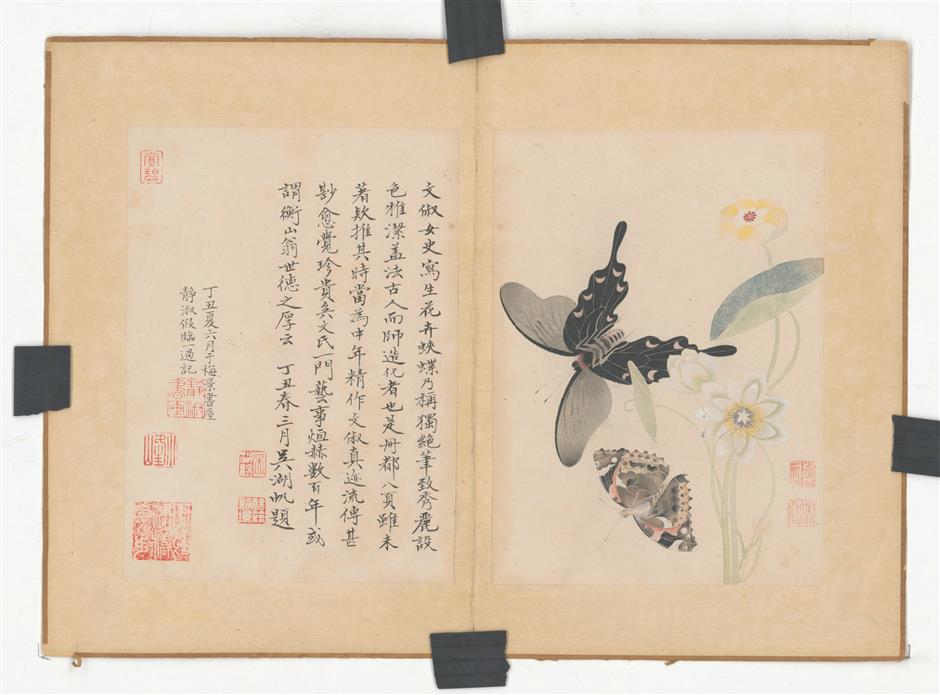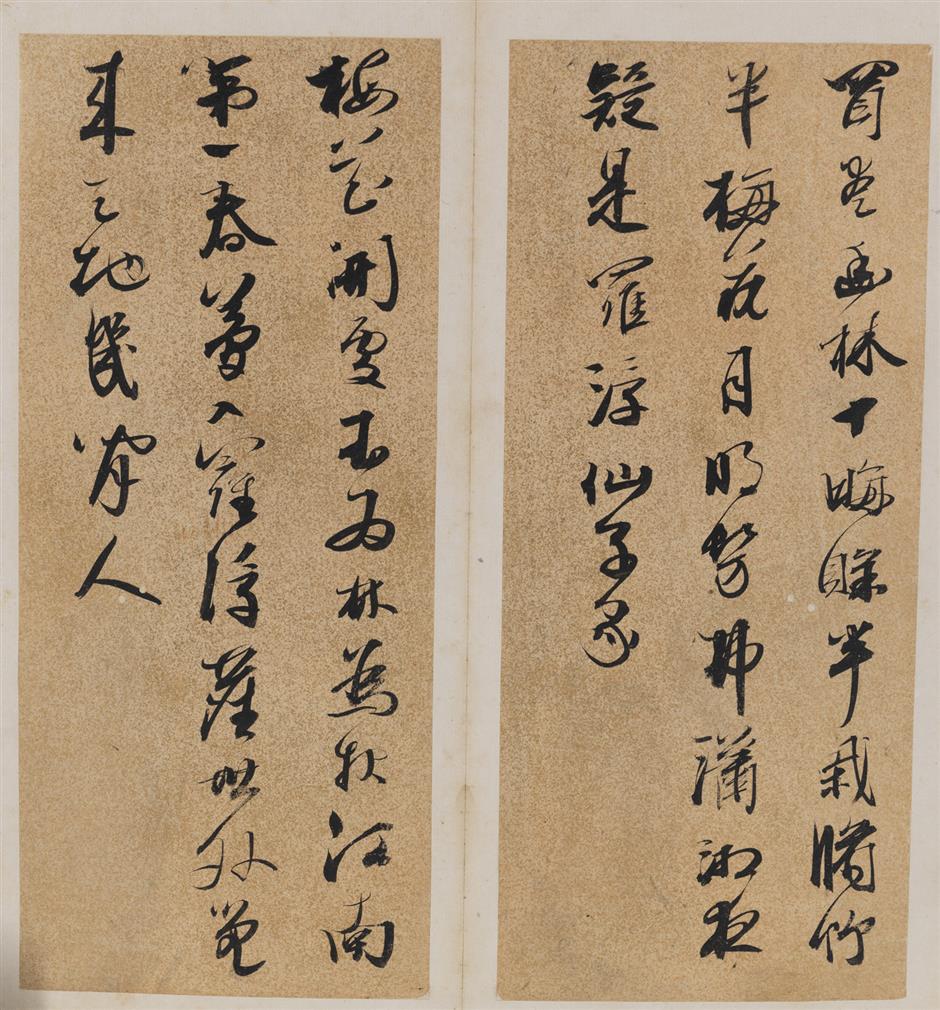The Hangzhou Museum is hosting a unique exhibition of 160 paintings and calligraphic works by female scholars, in collaboration with 16 other museums and galleries in China. Visitors to the exhibition can explore women’s art from the Ming (1368–1644) and Qing (1644–1911) dynasties in the Jiangnan area.
Jiangnan refers to the southern part of the lower reaches of the Yangtze River, mainly covering present-day Shanghai, southern Jiangsu Province and northern Zhejiang Province.
Since the mid-14th century, this area experienced rapid social and economic development, alongside thriving academic thought. Open-minded families made great strides, allowing their daughters and wives to study literature, calligraphy and painting.
Before the Ming Dynasty, feudal society often confined women to their homes, believing they should avoid outside contact and devote themselves solely to their husbands and children, leaving them with no social life.
Consequently, the feudal education system led to the dominance of men in literature and art. Women were banned from receiving education, and illiterate females were often considered to have better morals because of it.
Ingenious and unique
At the exhibition, people could view how the women living in the Jiangnan region began to spring out in the art field by virtue of ingenuity and unique aesthetics.
Ma Shouzhen is regarded as a pioneering Ming Dynasty woman who sought social status, symbolizing emerging changes in women’s social thinking.
Ma was well-known for her talented skills in portraying orchids and bamboo, as well as writing poems. Instead of depicting women’s lives confined to their chambers, highlighting their loneliness and longing for the outside world, Ma chose to focus on mainstream themes common in the painting genres of male scholars.
With social development, influential male literati began supporting women in the arts, raising public awareness of education. In return, many women started to realize their self-worth through art and elevated their social status by improving their literacy.
Painting gifts became a key virtue for educated women in the Ming Dynasty, leading families to cultivate their daughters’ artistic skills. As a result, a group of prominent female painters emerged in the culturally and commercially thriving Jiangnan region.

A painting by Wen Chu, a female artist from the Ming Dynasty. On the left is a critique written by renowned art collector Wu Hufan.
The exhibits on display demonstrate the excellence of Wen Chu, a female artist from the Ming Dynasty, in drawing flowers and butterflies. Born into a prestigious painting family in present-day Jiangsu Province, she began to study art during her childhood. Many modern connoisseurs adore her works for their subtle emotions, delicate strokes, and elaborate layouts that set them apart from men’s.
Different eras and social hierarchies endowed women with varied artistic characters and personalities. However, cultured women still faced restrictions on travel compared to men. Forming associations was a key way for them to learn about the outside world.
In Hangzhou, women established painting organizations to share skills and foster female creative growth. During the Qing Dynasty, the Jiaoyuan Poets Society was a well-known female art and writing society. It was founded by women in what is now the Xixi Wetland Park. Some became financially independent by selling their paintings.
The New Jiaoyuan Poets Society, led by modern female poets, carries on the spirit of the previous group which no longer exists. Every year, students and poets from Zhejiang Province hold a ceremony to honor these outstanding women.
No matter how much women sought social prestige through art and literature, medieval society continued to restrict their freedom. Although some upper-class women enjoyed a luxurious and well-educated life, they often felt constrained and could only express their emotions through paintings within their homes.
As the exhibition suggests, women were still discouraged from venturing out, but they engaged in playing six-string zithers, preparing tea, painting and embroidering in the garden. They were considered the property of their spouses or fathers.

Calligraphy works by Xing Cijing, a female artist from the Ming Dynasty
If you go
Date: Through February 24, closed on Mondays
Admission: Free
Address: 18 Liangdao Hill
粮道山18号







